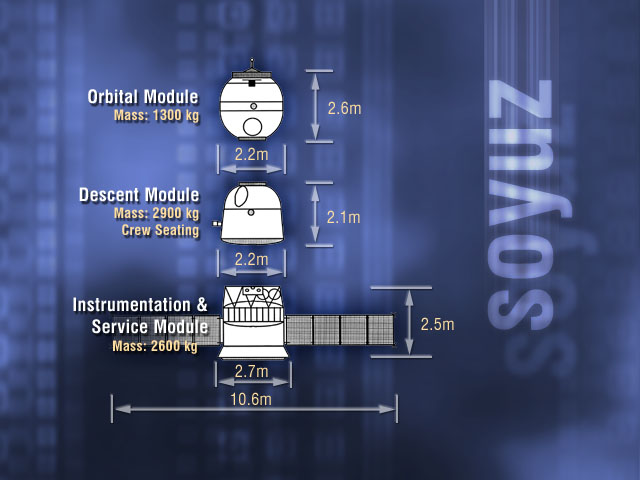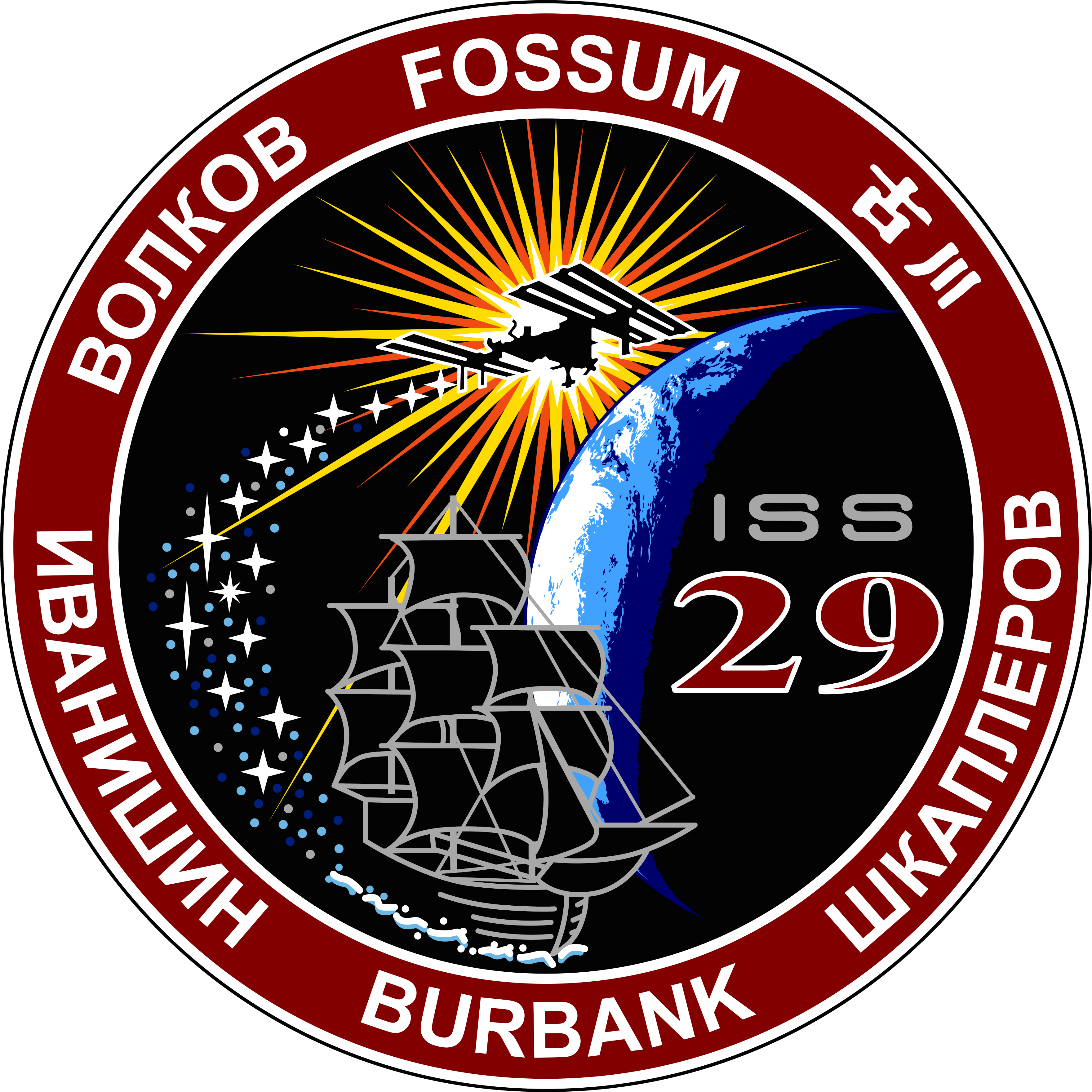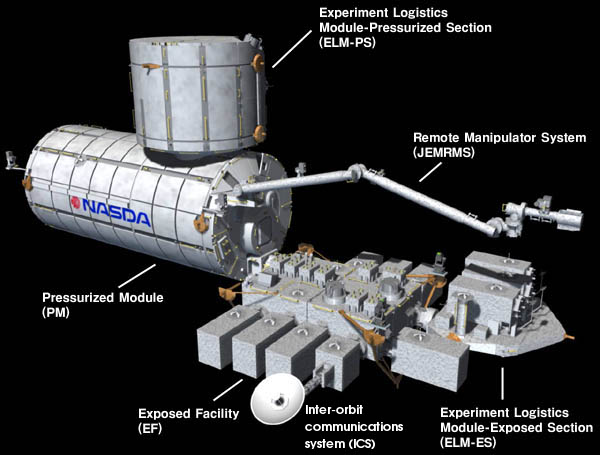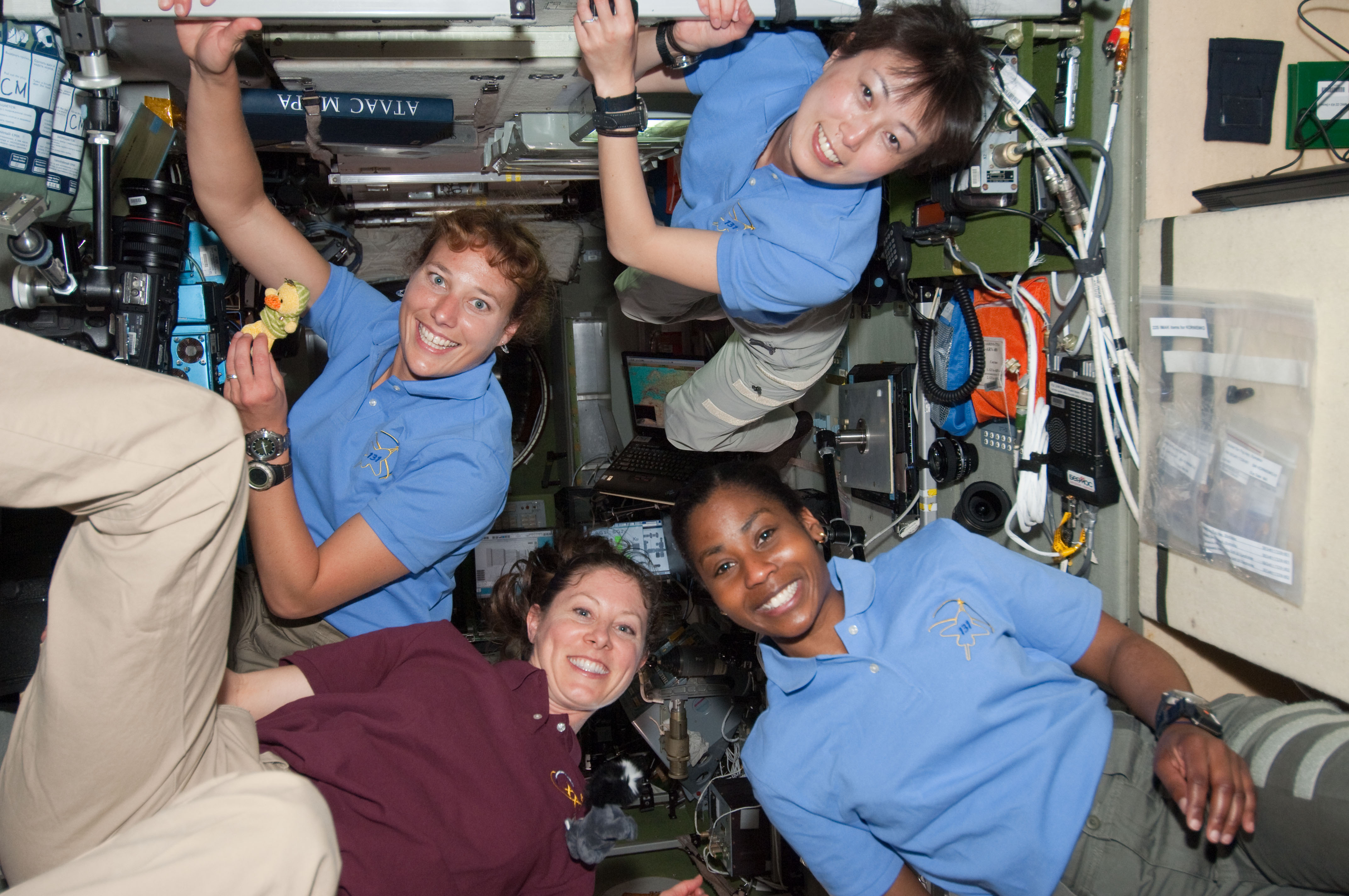|
Soyuz TMA-17
Soyuz TMA-17 was a human spaceflight mission to the International Space Station (ISS). TMA-17 crew members participated in ISS Expedition 22 and Expedition 23. The mission ended when the Soyuz TMA-17 capsule landed on 2 June 2010. Crew Crew notes Noguchi is the first Japan Aerospace Exploration Agency (JAXA) astronaut and the second Japanese astronaut to fly on a Soyuz, after Toyohiro Akiyama. Backup crew Launch and docking Soyuz TMA-17 was launched on 20 December 2009 and transported three members of the ISS Expedition 22 crew to the station. Soyuz TMA-17 was the 104th flight of a Soyuz spacecraft. The Soyuz remained docked to the space station for the remainder of the Expedition 22 increment serving as an emergency escape vehicle. This mission marked the first Soyuz launch in the month of December for more than 19 years. The prior Soyuz launch in the month of December was Soyuz TM-11 on 2 December 1990. This mission also included the last planned docking of a ... [...More Info...] [...Related Items...] OR: [Wikipedia] [Google] [Baidu] |
Roscosmos
The State Corporation for Space Activities "Roscosmos", commonly known simply as Roscosmos (), is a State corporation (Russia), state corporation of the Russian Federation responsible for space science, space flights, List of space agencies, cosmonautics programs, and aerospace research. Originating from the Soviet space program founded in the 1950s, Roscosmos emerged following the dissolution of the Soviet Union in 1991. It initially began as the Russian Space Agency,, ''Rossiyskoye kosmicheskoye agentstvo'', or RKA (). which was established on 25 February 1992 and restructured in 1999 and 2004 as the Russian Aviation and Space Agency, ''Rossiyskoye aviatsionno-kosmicheskoye agentstvo'', commonly known as (), established on 25 May 1999. and the Federal Space Agency (Roscosmos), (Роскосмос), ''Federalnoye kosmicheskoye agentstvo (Roskosmos)''. respectively. In 2015, the Federal Space Agency (Roscosmos) was merged with the United Rocket and Space Corporation, ... [...More Info...] [...Related Items...] OR: [Wikipedia] [Google] [Baidu] |
Soyuz Programme
The Soyuz programme ( , ; , meaning "Union") is a human spaceflight programme initiated by the Soviet Union in the early 1960s. The Soyuz spacecraft was originally part of a Moon landing project intended to put a Soviet cosmonaut on the Moon. It was the third Soviet human spaceflight programme after the Vostok (1961–1963) and Voskhod (1964–1965) programmes. The programme consists of the Soyuz capsule and the Soyuz rocket and is now the responsibility of Roscosmos. After the retirement of the Space Shuttle in 2011, the Soyuz was the only way for humans to get to the International Space Station (ISS) until 30 May 2020 when Crew Dragon flew to the ISS for the first time with astronauts. Soyuz rocket The launch vehicles used in the Soyuz expendable launch system are manufactured at the Progress State Research and Production Rocket Space Center (TsSKB-Progress) in Samara, Russia. As well as being used in the Soyuz programme as the launcher for the crewed Soyuz spacecr ... [...More Info...] [...Related Items...] OR: [Wikipedia] [Google] [Baidu] |
Soyuz TM-11
Soyuz TM-11 was the eleventh expedition to the Russian Space Station Mir, using a Soyuz-TM crew transport vessel. The mission notably carried a Japanese television reporter from Tokyo Broadcasting System.The mission report is available here: http://www.spacefacts.de/mission/english/soyuz-tm11.htm Crew Mission highlights Soyuz TM-11 was the 11th expedition to Mir, which spent 175 days docked to the space station. Coincidentally it was launched on the same day as STS-35. As the mission carried Toyohiro Akiyama, a reporter for the Japanese television network Tokyo Broadcasting System, the spacecraft's launch shroud and its Soyuz booster were painted with the Japanese flag and advertisements for Sony, Unicharm, and Otsuka Pharmaceutical (), abbreviated OPC, is a pharmaceutical company headquartered in Tokyo, Osaka and Naruto, Tokushima, Naruto, Japan. The company was established August 10, 1964. History OPC's parent company Otsuka Holdings Co. Ltd. joined the Tokyo Stock Exch ... [...More Info...] [...Related Items...] OR: [Wikipedia] [Google] [Baidu] |
Soyuz (spacecraft)
Soyuz () is a series of spacecraft which has been in service since the 1960s, having made more than 140 flights. It was designed for the Soviet space program by the Korolev Design Bureau (now Energia (corporation), Energia). The Soyuz succeeded the Voskhod spacecraft and was originally built as part of the Soviet crewed lunar programs. It is launched atop the similarly named Soyuz (rocket family), Soyuz rocket from the Baikonur Cosmodrome in Kazakhstan. Following the Soviet Union's dissolution, Roscosmos, the Russian space agency, continued to develop and utilize the Soyuz. Between the Space Shuttle retirement, Space Shuttle's 2011 retirement and the SpaceX Crew Dragon's 2020 debut, Soyuz was the sole means of crewed transportation to and from the International Space Station, a role it continues to fulfill. The Soyuz design has also influenced other spacecraft, including China's Shenzhou (spacecraft), Shenzhou and Russia's Progress (spacecraft), Progress cargo vehicle. The Soyu ... [...More Info...] [...Related Items...] OR: [Wikipedia] [Google] [Baidu] |
Douglas H
Douglas may refer to: People * Douglas (given name) * Douglas (surname) Animals * Douglas (parrot), macaw that starred as the parrot ''Rosalinda'' in Pippi Longstocking * Douglas the camel, a camel in the Confederate Army in the American Civil War Businesses * Douglas Aircraft Company * Douglas (cosmetics), German cosmetics retail chain in Europe * Douglas Holding, former German company * Douglas (motorcycles), British motorcycle manufacturer Peerage and Baronetage * Duke of Douglas * Earl of Douglas, or any holder of the title * Marquess of Douglas, or any holder of the title * Douglas baronets Peoples * Clan Douglas, a Scottish kindred * Dougla people, West Indians of both African and East Indian heritage Places Australia * Douglas, Queensland, a suburb of Townsville * Douglas, Queensland (Toowoomba Region), a locality * Port Douglas, North Queensland, Australia * Shire of Douglas, in northern Queensland Canada * Douglas, New Brunswick * Douglas Parish, New Bru ... [...More Info...] [...Related Items...] OR: [Wikipedia] [Google] [Baidu] |
Satoshi Furukawa
is a Japanese surgeon and JAXA astronaut. Furukawa was assigned to the International Space Station as a flight engineer on long-duration missions Expedition 28/ 29 (2011) and Expedition 69/ 70 (2023-2024). Medical career Furakawa graduated from Eiko high school, Kamakura, in 1983; he received a Doctor of Medicine degree from the University of Tokyo in 1989, and a Doctor of Philosophy degree in Medical Science from the same in 2000. From 1989 to 1999, Furukawa worked in the Department of Surgery at the University of Tokyo, as well as the Department of Anesthesiology at JR Tokyo General Hospital, the Department of Surgery at Ibaraki Prefectural Central Hospital, and at Sakuragaoka Hospital. NASDA/JAXA career In February 1999, Furukawa was selected by the National Space Development Agency of Japan (NASDA) as one of three Japanese astronaut candidates for the International Space Station (ISS). He started the ISS Astronaut Basic Training program in April 1999 and was certified as ... [...More Info...] [...Related Items...] OR: [Wikipedia] [Google] [Baidu] |
Anton Shkaplerov
Anton Nikolaevich Shkaplerov (; born 20 February 1972) is a former Russian cosmonaut. He is a veteran of four spaceflights. Early life Shkaplerov was born 20 February 1972, in Sevastopol, Crimea. He is married to Tatyana Petrovna, and they have two daughters. His parents are Nikolay Ivanovich Shkaplerov and Tamara Viktorovna Shkaplerova. In 1989, Shkaplerov learned to fly in a Yakovlev Yak-52, and after graduating from Sevastopol High School the same year, he entered the Kachinsk Air Force Pilot School. He graduated in 1994 as a pilot-engineer, and then graduated from N. E. Zukovskiy Air Force Engineering School in 1997. His hobbies include sports, travel, fishing, and golf. Cosmonaut career After graduating in 1997, Shkaplerov served as a senior pilot-instructor in the Russian Air Force, flying Yak-52, L-29 and MiG-29 aircraft. He is a Class 2 Air Force pilot-instructor and an Instructor of General Parachute Training, having performed more than 300 parachute jumps. In May 2 ... [...More Info...] [...Related Items...] OR: [Wikipedia] [Google] [Baidu] |
Toyohiro Akiyama
is a retired Japanese TV journalist and professor at Kyoto University of Art and Design. In December 1990, he spent seven days aboard the Mir space station. He became the first person of Japanese people, Japanese nationality to fly in space, and his space mission was the second spaceflight to be commercially sponsored and funded. Akiyama was also the first civilian to fly aboard a commercial space flight and the first journalist to report from outer space. Education and career Akiyama attended and earned his bachelor's degree at the International Christian University located in Mitaka, Tokyo. He then joined the Tokyo Broadcasting System (TBS) as a journalist in 1966. He worked for the BBC World Service from 1967–1971 before becoming a correspondent for the TBS Division of Foreign News. From 1984 to 1988, he served as TBS chief correspondent in Washington D.C. Space training On 17 August 1989, Akiyama was selected for a commercial Soviet-Japanese flight. The flight was spon ... [...More Info...] [...Related Items...] OR: [Wikipedia] [Google] [Baidu] |
NASA
The National Aeronautics and Space Administration (NASA ) is an independent agencies of the United States government, independent agency of the federal government of the United States, US federal government responsible for the United States's civil list of government space agencies, space program, aeronautics research and outer space, space research. National Aeronautics and Space Act, Established in 1958, it succeeded the National Advisory Committee for Aeronautics (NACA) to give the American space development effort a distinct civilian orientation, emphasizing peaceful applications in space science. It has since led most of America's space exploration programs, including Project Mercury, Project Gemini, the 1968–1972 Apollo program missions, the Skylab space station, and the Space Shuttle. Currently, NASA supports the International Space Station (ISS) along with the Commercial Crew Program and oversees the development of the Orion (spacecraft), Orion spacecraft and the Sp ... [...More Info...] [...Related Items...] OR: [Wikipedia] [Google] [Baidu] |
JAXA
The is the Japanese national air and space agency. Through the merger of three previously independent organizations, JAXA was formed on 1 October 2003. JAXA is responsible for research, technology development and launch of satellites into orbit, and is involved in many more advanced missions such as asteroid exploration and possible human exploration of the Moon. Its motto is ''One JAXA'' and its corporate slogan is ''Explore to Realize'' (formerly ''Reaching for the skies, exploring space''). History On 1 October 2003, three organizations were merged to form the new JAXA: Japan's Institute of Space and Astronautical Science (ISAS), the National Aerospace Laboratory of Japan (NAL), and National Space Development Agency of Japan (NASDA). JAXA was formed as an Independent Administrative Institution administered by the Ministry of Education, Culture, Sports, Science and Technology (MEXT) and the Ministry of Internal Affairs and Communications (MIC). Before the mer ... [...More Info...] [...Related Items...] OR: [Wikipedia] [Google] [Baidu] |
Expedition 23
Expedition 23 () was the 23rd long-duration mission to the International Space Station (ISS). Expedition 23 began with the Soyuz TMA-16 undocking on 18 March 2010. Shortly thereafter cosmonauts Aleksandr Skvortsov and Mikhail Korniyenko and astronaut Tracy Caldwell Dyson arrived at the Space Station on Soyuz TMA-18 on 4 April 2010. The Soyuz spacecraft lifted off from the Baikonur Cosmodrome at 00:04 EST on 2 April 2010. Crew ;Source: NASA Backup crew * Douglas H. Wheelock – Commander * Anton Shkaplerov * Satoshi Furukawa *Mikhail Tyurin *Aleksandr Samokutyayev * Scott J. Kelly Mission overview Three Russian cosmonauts, two American and one Japanese astronauts made up the Expedition 23 crew. It was the first ISS crew to include three Russians at once. The Expedition 23 crew continued outfitting the newest modules of the nearly completed space station. The crew welcomed the shuttle flight STS-131 in April 2010. The Expedition 23 crew also saw the arrival of the Rasvet ... [...More Info...] [...Related Items...] OR: [Wikipedia] [Google] [Baidu] |
Expedition 22
Expedition 22 was the twenty-second long duration crew flight to the International Space Station (ISS). This expedition began on 1 December 2009 when the Expedition 21 crew departed. For a period of three weeks, there were only two crew members; it was the first time that had occurred since STS-114. Commander Jeff Williams and flight engineer Maksim Surayev were joined by the rest of their crew on 22 December 2009, making the Expedition 22 a crew of five. The expedition had ended when Soyuz TMA-16 undocked on 18 March 2010, and was immediately followed by the start of Expedition 23. Crew Backup crew * Shannon Walker – Commander * Aleksandr Skvortsov * Douglas H. Wheelock * Anton Shkaplerov * Satoshi Furukawa Spacewalks Gallery Image:Expedition22_Kotov_Creamer_Noguchi.jpg, Kotov, Creamer and Noguchi. Image:Soyuz Rolls to the Pad (Expedition 22).jpg, The Soyuz TMA-17 spacecraft is rolled out by train to the launch pad at the Baikonur Cosmodrome, Kazakhstan. Image:Ex ... [...More Info...] [...Related Items...] OR: [Wikipedia] [Google] [Baidu] |








